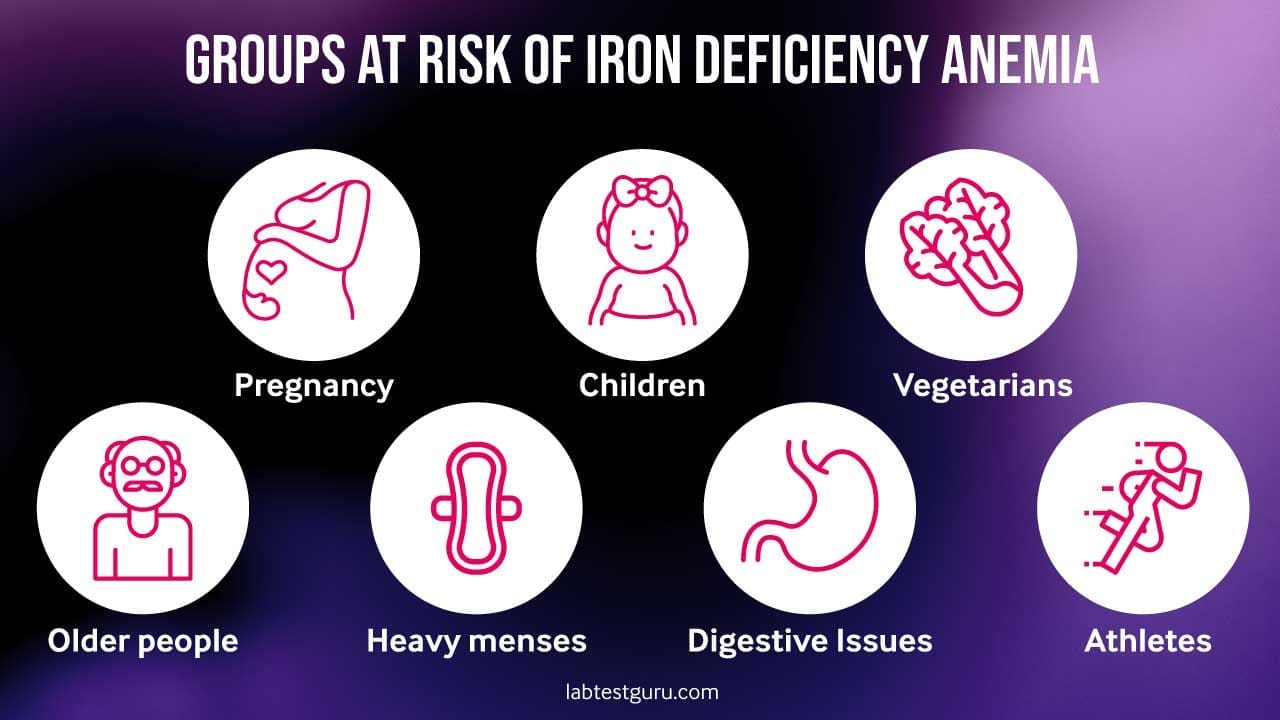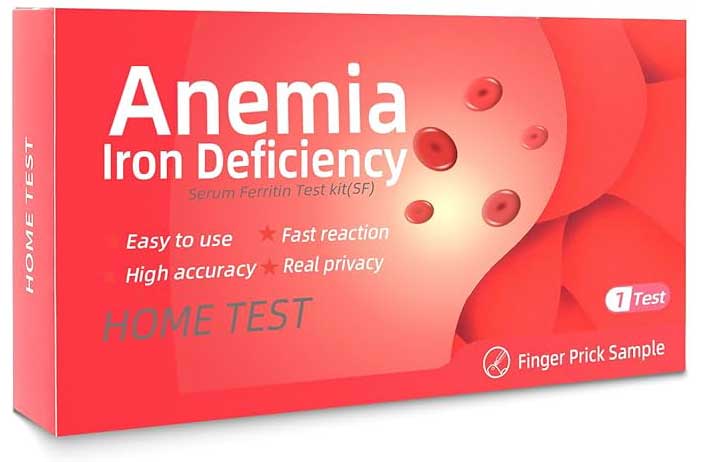Iron plays a vital role in keeping your body running smoothly, yet iron deficiency is one of the most common nutritional deficiencies worldwide. If you’re constantly feeling tired, weak, or lightheaded, low iron levels might be to blame. Fortunately, at-home iron tests offer a convenient way to check your iron status without the hassle of visiting a doctor’s office. But how reliable are these at-home iron tests? What should you do if your results show low iron levels? Let’s break it all down in this easy-to-follow guide.
Quick Guide
Disclaimer: This information is based on research and is accurate to the best of our knowledge at the time of publication. Please note that the writer has not personally used or tested these products.
Why Is Iron So Important?
Iron is essential for your body because it helps produce hemoglobin, the protein in red blood cells that carries oxygen throughout your body. Without enough iron, your organs and tissues won’t get the oxygen they need, leading to fatigue, weakness, and other health problems. Here’s why maintaining healthy iron levels is crucial:
- Energy Production – Iron contributes to enzymatic reactions in energy production.
- Brain Function – Iron plays a crucial role in brain function, supporting oxygen transport, DNA synthesis, mitochondrial respiration, myelin production, and neurotransmitter metabolism.
- Immune System Support – Key genes and proteins regulating iron homeostasis help restrict bacterial access to iron, while innate immune cells—such as monocytes, macrophages, microglia, and lymphocytes—control iron fluxes through hepcidin and ferroportin to combat bacterial infections.
- Healthy Muscles – Provides oxygen to muscles for proper function.
- Hormone Production – Plays a role in producing essential hormones.
What Is Iron Deficiency Anemia?
Iron deficiency anemia happens when your body doesn’t have enough iron to produce sufficient hemoglobin. Without enough hemoglobin, your red blood cells can’t deliver oxygen effectively, leading to symptoms like:
- Constant fatigue
- Weakness
- Shortness of breath
- Pale or yellowish skin
- Cold hands and feet
- Dizziness or headaches
- Chest pain or rapid heartbeat
Who’s at risk? Certain groups of people are more likely to develop iron deficiency anemia, including:
- Women of childbearing age – Menstrual blood loss can deplete iron stores.
- Pregnant women – The body needs extra iron to support fetal development.
- Infants and young children – Rapid growth increases iron demands.
- Vegans and vegetarians – Plant-based diets may lack sufficient iron unless properly planned.
- People with digestive disorders – Conditions like Crohn’s disease, celiac disease, or ulcers can reduce iron absorption.
- Athletes – Intense exercise can increase iron needs due to higher red blood cell turnover.
- Frequent blood donors – Regular blood donation can lead to lower iron levels over time.

Why Consider an At-Home Iron Test?
If you suspect you have low iron levels but don’t want to visit a doctor just yet, an at-home iron test can provide valuable insights. These tests typically measure ferritin levels, a protein that stores iron in your body.
Benefits of At-Home Iron Tests
- Convenience – No need to schedule a doctor’s appointment.
- Privacy – Check your iron levels from the comfort of your home.
- Early Detection – Identify potential iron deficiency before symptoms worsen.
- Empowerment – Take charge of your health and nutrition.
However, these tests should be seen as a screening tool, not a final diagnosis. If your results indicate low iron, consult a healthcare professional for further evaluation.
How Do At-Home Iron Tests Work?
Most at-home iron tests involve a simple finger-prick blood test. Here’s a general step-by-step process:
- Wash your hands to prevent contamination.
- Use a lancet (a small needle) to prick your finger.
- Collect a small blood sample on a test strip.
- Wait for the results – Some tests provide instant results, while others require you to send the sample to a lab.
Popular At-Home Iron Test Kits
GetTested Iron Deficiency Test Kit
Best for Budget-Conscious Users
- Provides quick results in just 5 minutes.
- Uses a finger-prick blood sample.
- Simple and affordable.
| Pros | Cons |
|---|---|
| ✅ Easy to use ✅ Fast results ✅ Low cost | ❌ Only gives a yes/no result (not exact iron levels) ❌ Requires a finger prick |
Kueysing Iron Deficiency Test Kit
Best for Clear Instructions
- Offers a color chart for easy interpretation.
- Takes 15 minutes to display results.
- Suitable for both children and adults.
| Pros | Cons |
|---|---|
| ✅ Easy-to-follow instructions ✅ Color-coded results for clarity | ❌ More expensive than other options ❌ Longer wait time (15 minutes) |
Verisana Iron Test
Best for Comprehensive Lab Results
- Measures ferritin levels quantitatively.
- Requires sending a sample to a CLIA-certified lab.
- Results available online in about one week.
| Pros | Cons |
|---|---|
| ✅ Provides exact iron level measurements ✅ Professionally analyzed | ❌ More expensive than instant tests ❌ Requires mailing the sample ❌ Not available in some U.S. states (NY, NJ, RI, MD) |
What to Do If Your Iron Test Shows Low Levels
If your at-home test indicates low iron, don’t panic. Here are the next steps:
- Consult Your Doctor – Get a proper blood test to confirm your iron levels.
- Review Your Diet – Incorporate more iron-rich foods like:
- Heme iron (easier to absorb) – Red meat, poultry, seafood.
- Non-heme iron (plant-based sources) – Lentils, beans, spinach, fortified cereals.
- Pair iron with vitamin C – Oranges, bell peppers, and tomatoes help boost absorption.
- Consider Iron Supplements – If your doctor recommends them, choose the right form (ferrous sulfate, ferrous gluconate, etc.).
- Monitor Your Health – Retest your iron levels after a few months to track improvements.
Frequently Asked Questions
How accurate are at-home iron tests?
At-home tests can indicate if you have low iron levels, but they are not as precise as a lab test. Always follow up with a healthcare provider for confirmation.
Do at-home iron tests check for anemia?
Most at-home tests measure ferritin levels, which indicate iron stores. Some also measure hemoglobin, but a full anemia diagnosis requires additional testing.
Can I take an iron supplement without testing?
It’s best to test first. An easy way to test would be to use an at-home iron test. Taking too much iron can be harmful and cause digestive issues or iron overload.
How often should I check my iron levels?
If you have risk factors for iron deficiency, consider testing every few months or as advised by your doctor.
Final Thoughts
At-home iron tests can be a helpful first step in understanding your iron levels. They provide quick insights and are a great tool for those looking to monitor their health proactively. However, they should never replace a professional diagnosis. If you’re experiencing symptoms of iron deficiency, consult a doctor for a full evaluation.
Taking charge of your iron levels can boost your energy, improve your overall health, and help you feel your best every day! 💪
Disclaimer: This information is for general knowledge and informational purposes only and does not constitute medical advice. Always consult with a qualified healthcare professional for any health concerns or before making any decisions related to your health.
References
- Ward RJ, Crichton RR, Taylor DL, Della Corte L, Srai SK, Dexter DT. Iron and the immune system. J Neural Transm (Vienna). 2011 Mar;118(3):315-28. doi: 10.1007/s00702-010-0479-3. Epub 2010 Sep 29. PMID: 20878427.
- Ward RJ, Zucca FA, Duyn JH, Crichton RR, Zecca L. The role of iron in brain ageing and neurodegenerative disorders. Lancet Neurol. 2014 Oct;13(10):1045-60. doi: 10.1016/S1474-4422(14)70117-6. PMID: 25231526; PMCID: PMC5672917.
- Moustarah F, Daley SF. Dietary Iron. [Updated 2024 Jan 8]. In: StatPearls [Internet]. Treasure Island (FL): StatPearls Publishing; 2025 Jan-.
- Goldberg S, Hoffman J. Clinical Hematology Made Ridiculously Simple, 1st Edition: An Incredibly Easy Way to Learn for Medical, Nursing, PA Students, and General Practitioners (MedMaster Medical Books). 2021.
- Garrison C. The Iron Disorders Institute Guide to Anemia: Understanding the Causes, Symptoms, and Healing of Iron Deficiency and Other Anemias (Cumberland House). 2009.
- Johansson A. Iron Deficiency Anemia Cookbook: Essential Diet Guide, 50 + Iron Rich Recipes and a 2-Week Diet Plan to Help Low Iron Levels. 2021.








